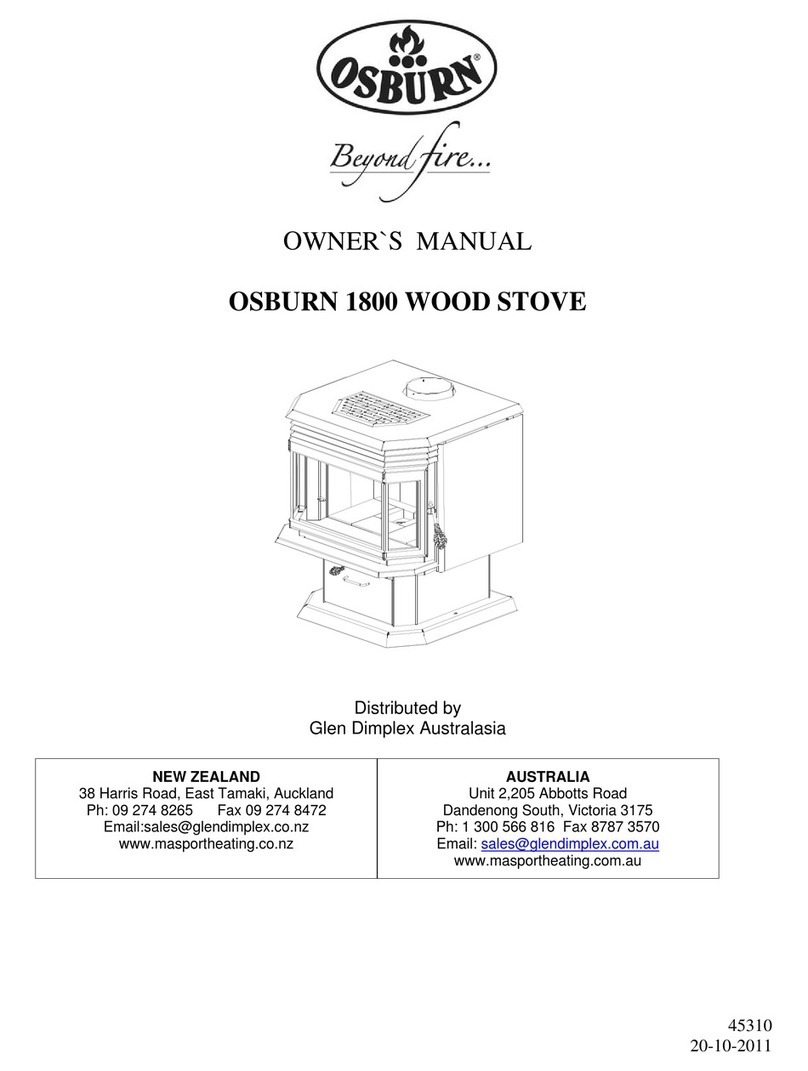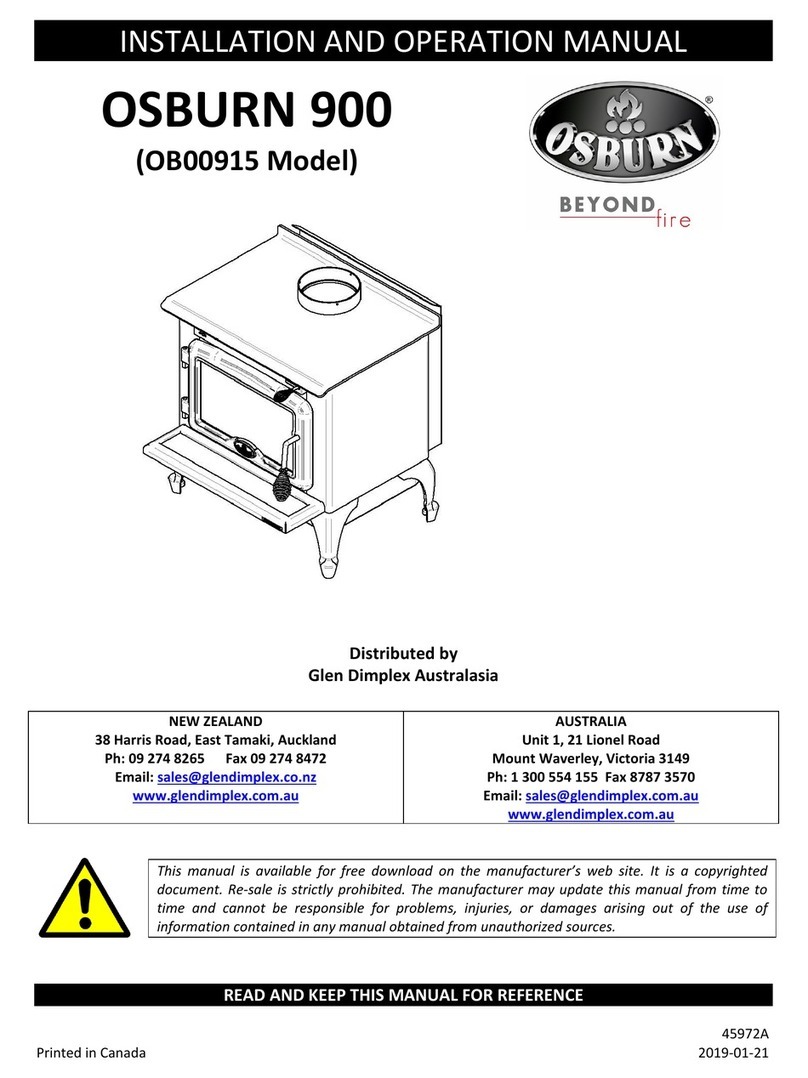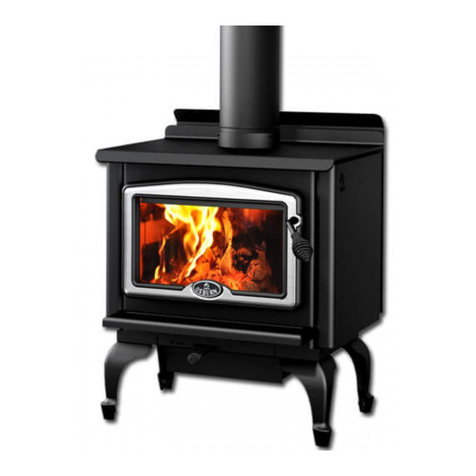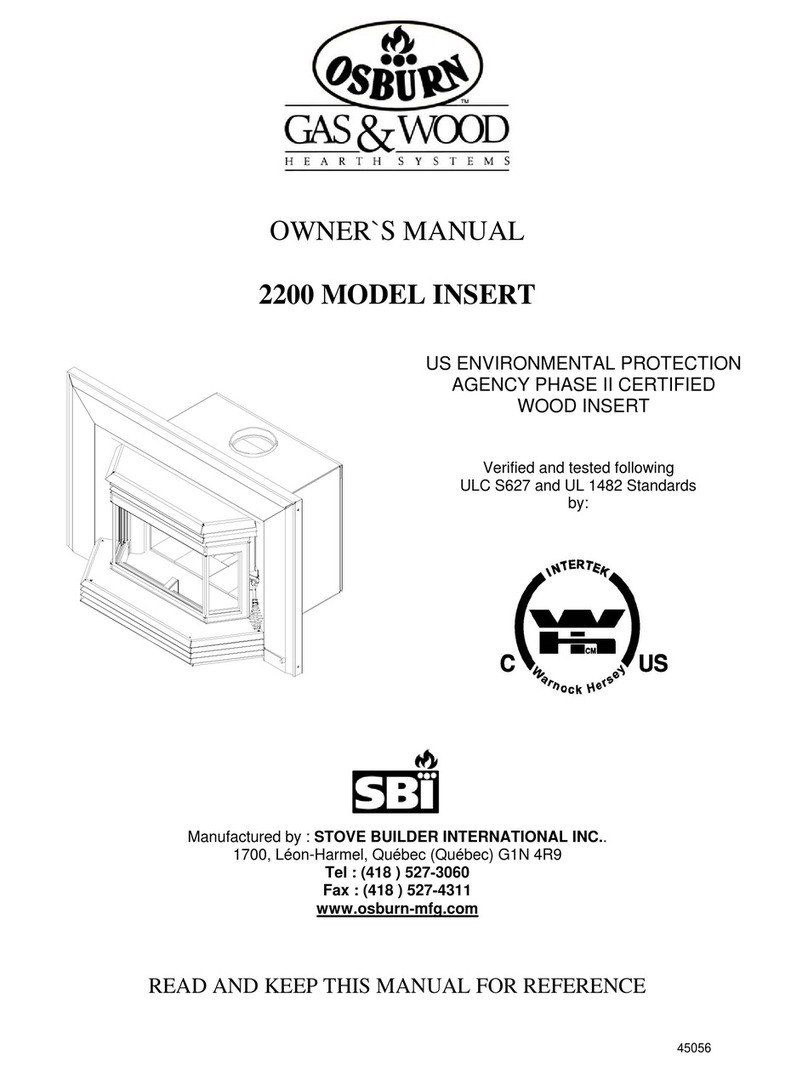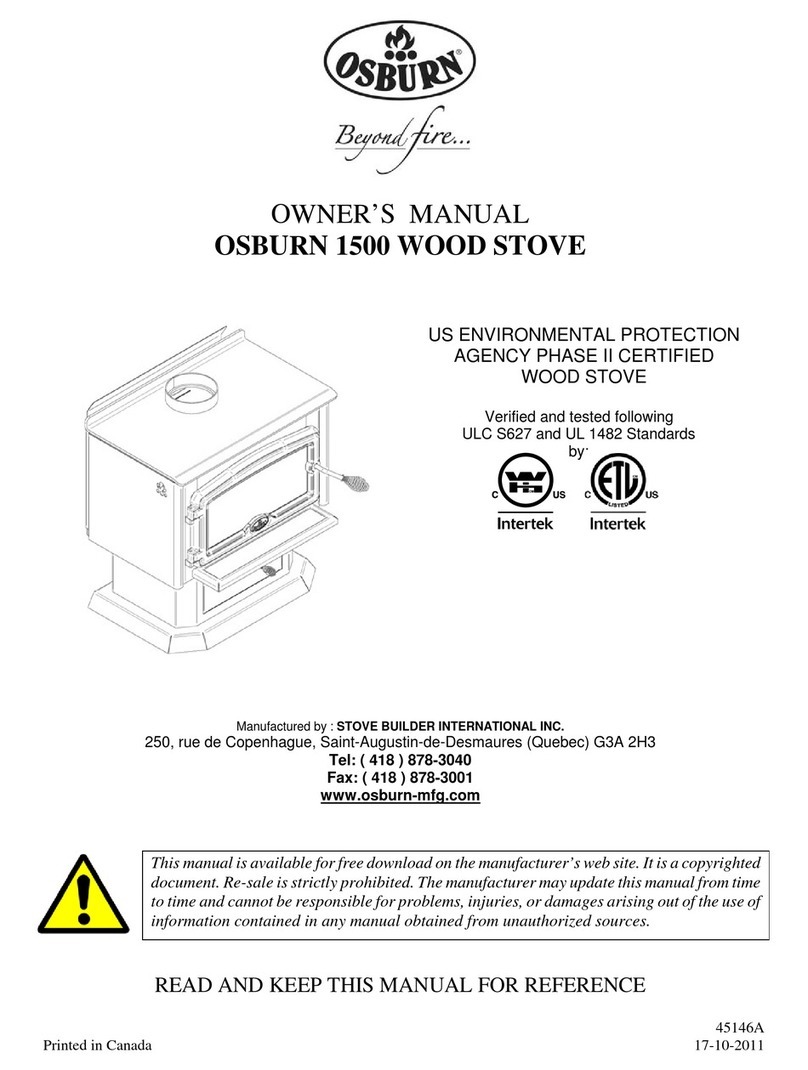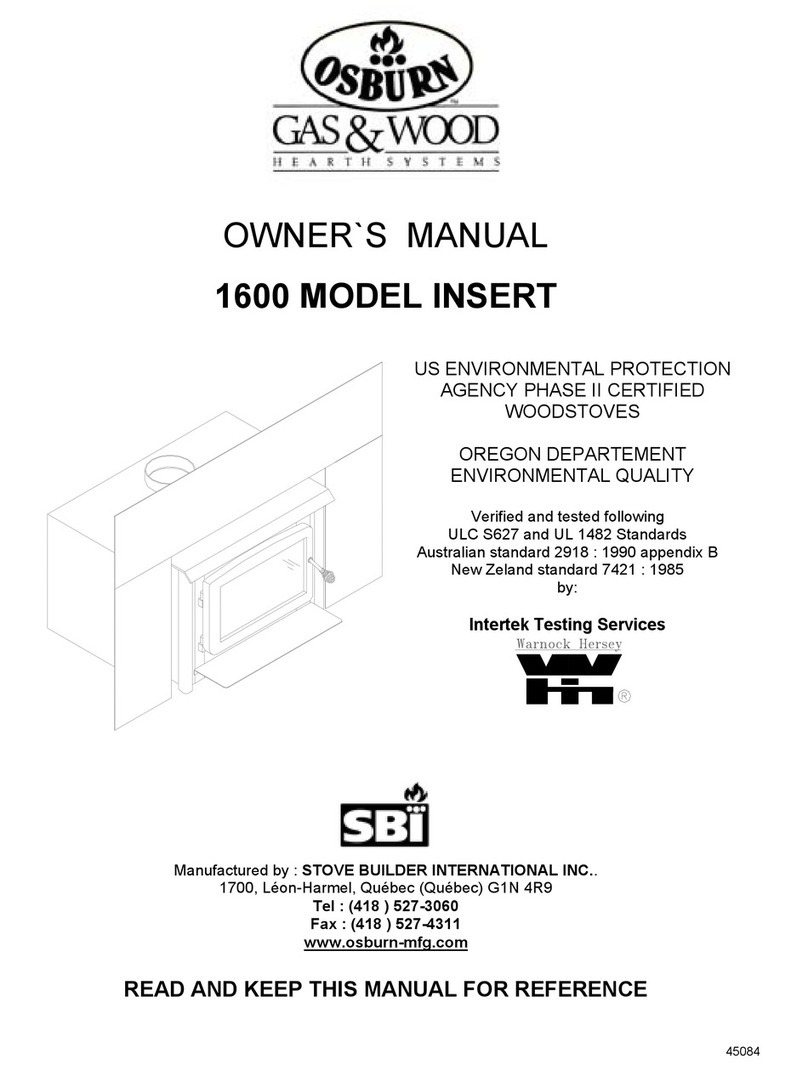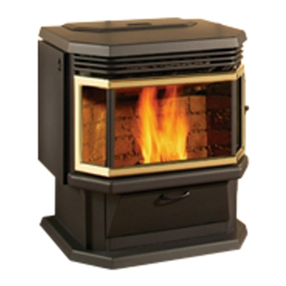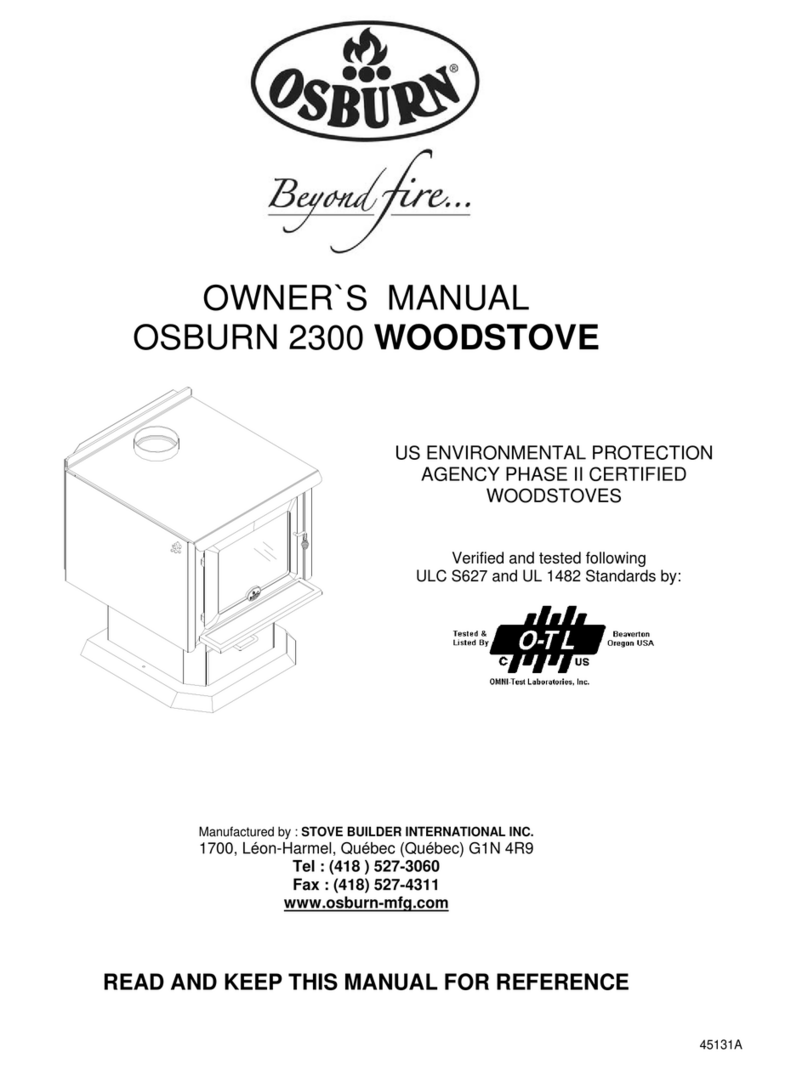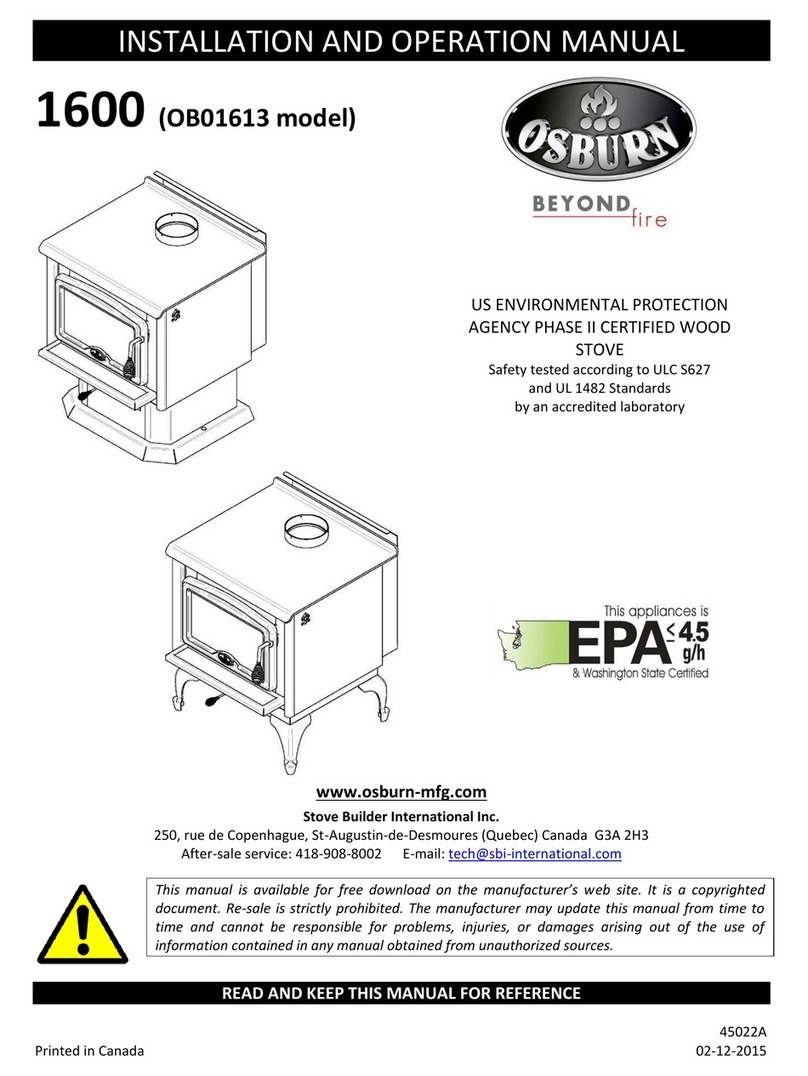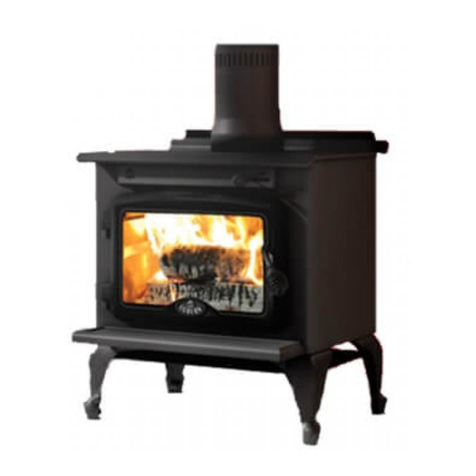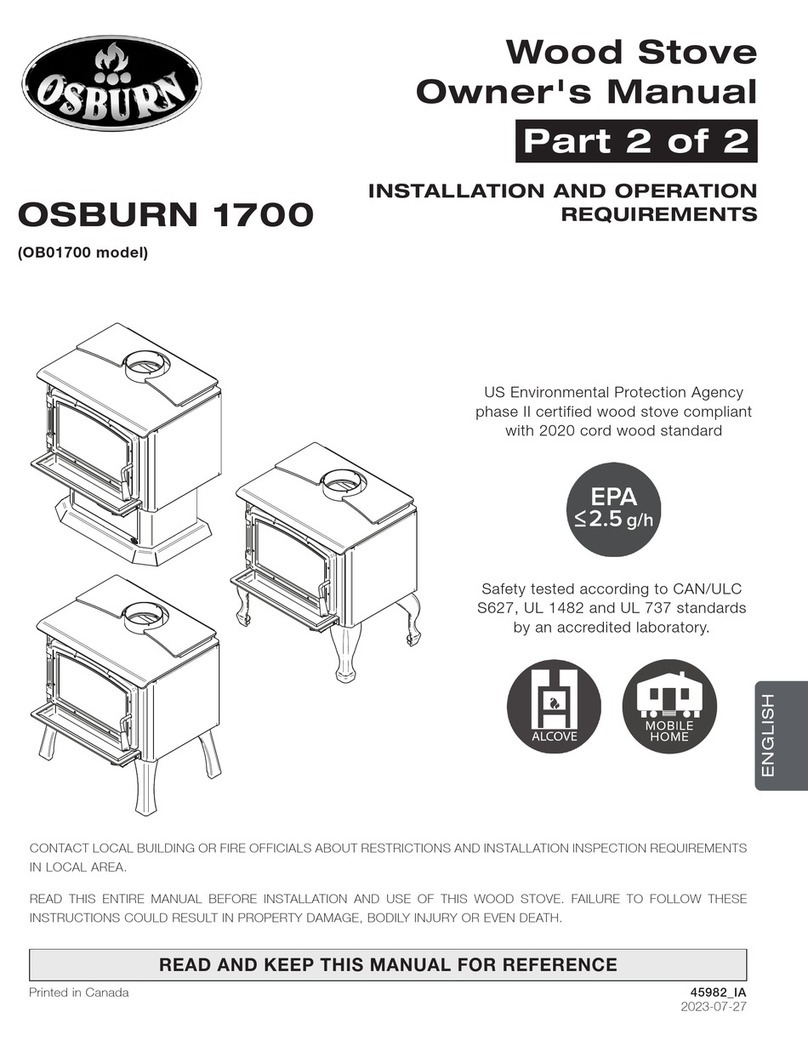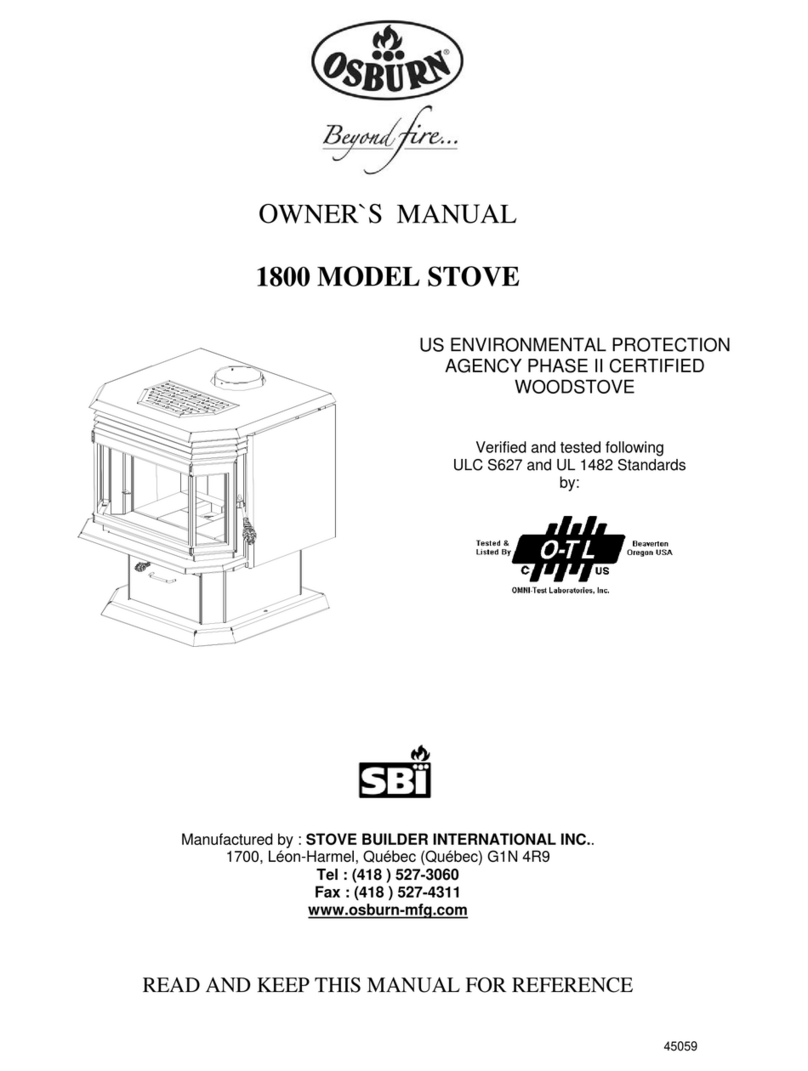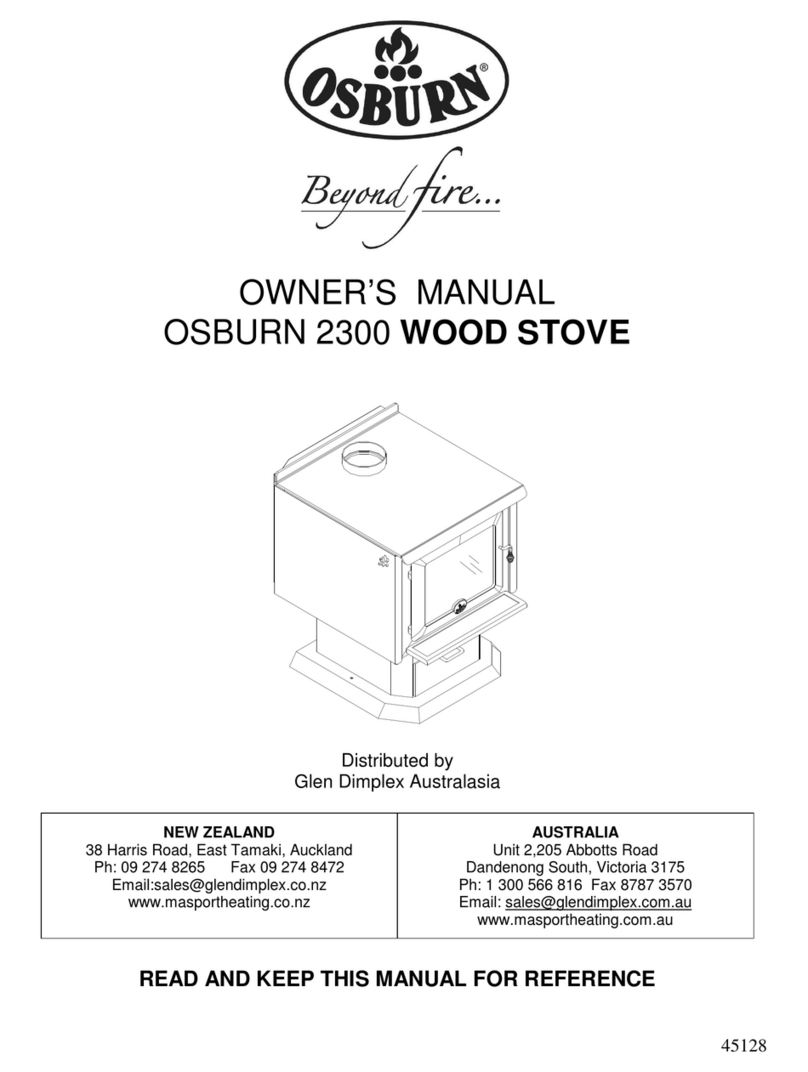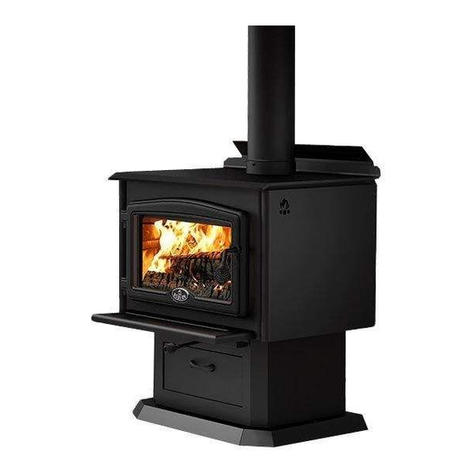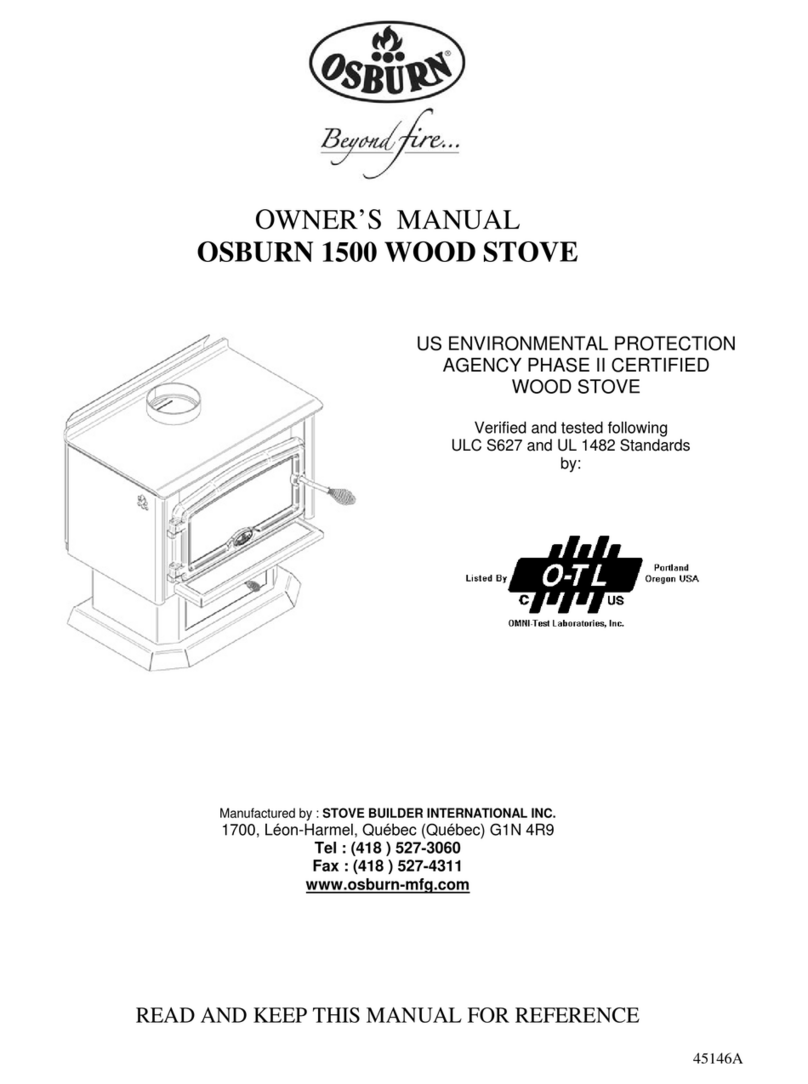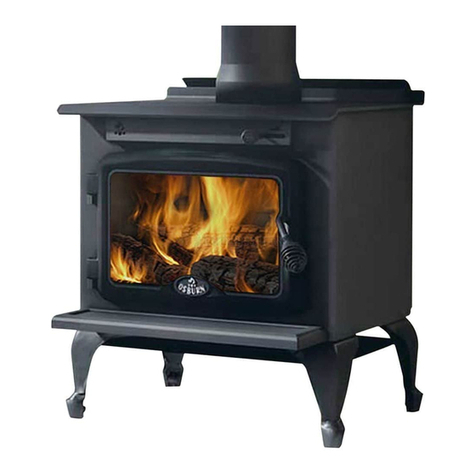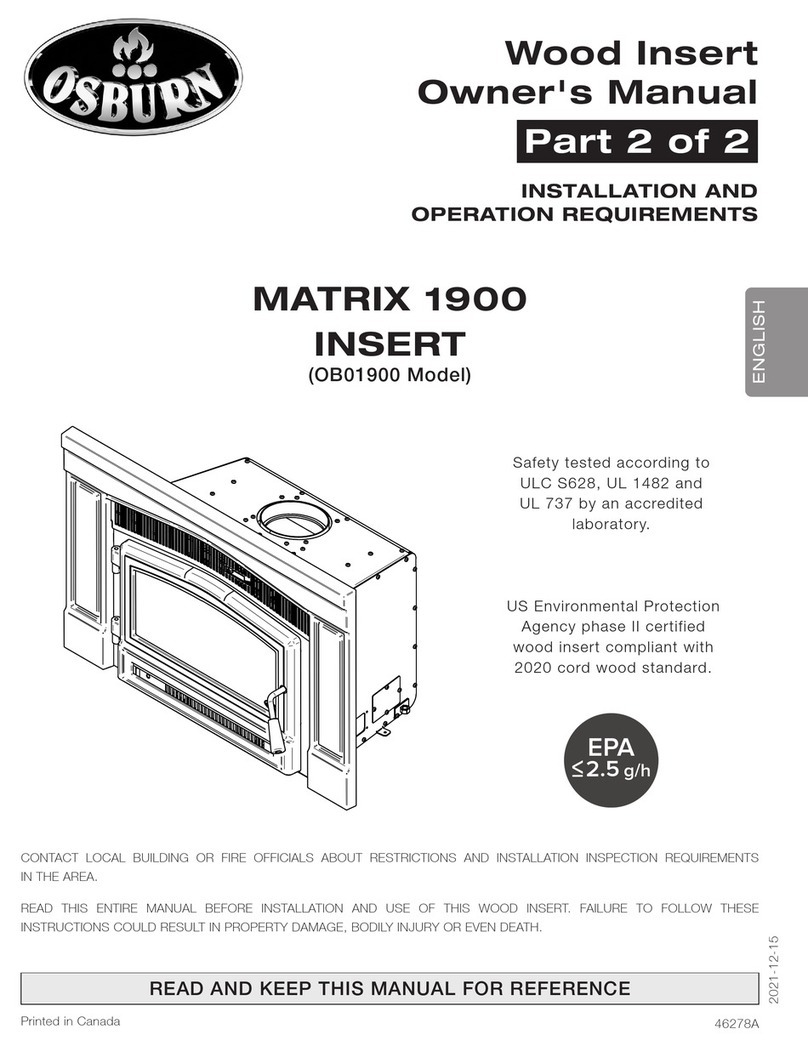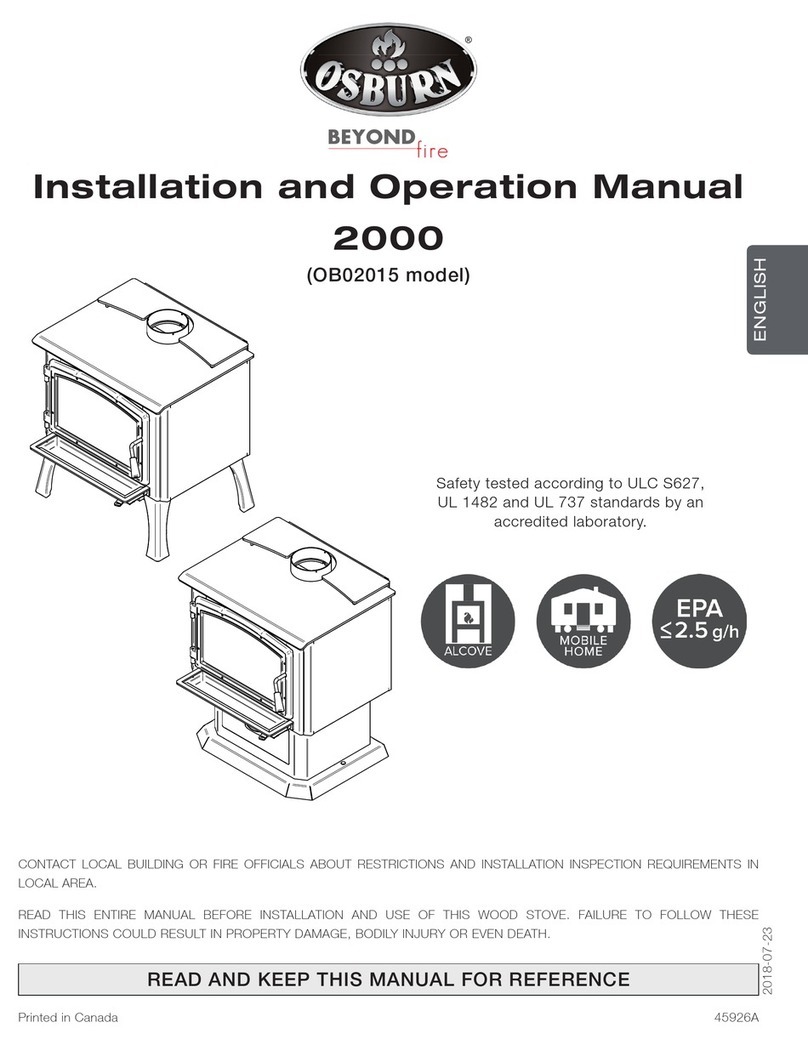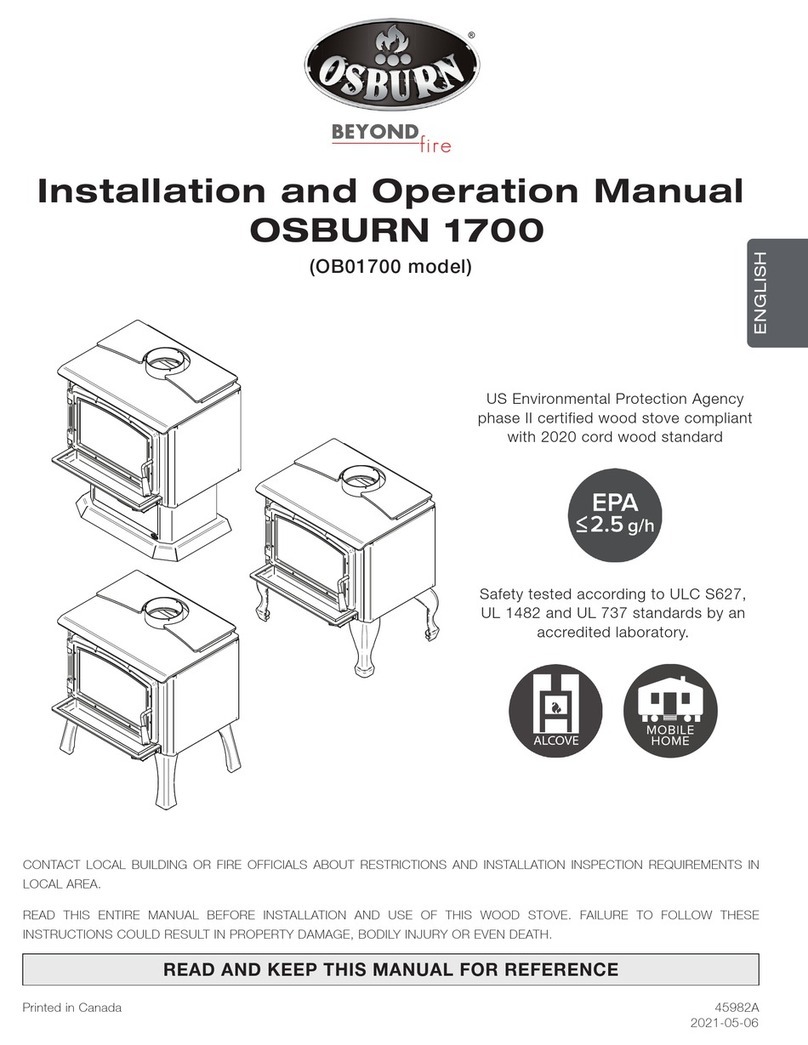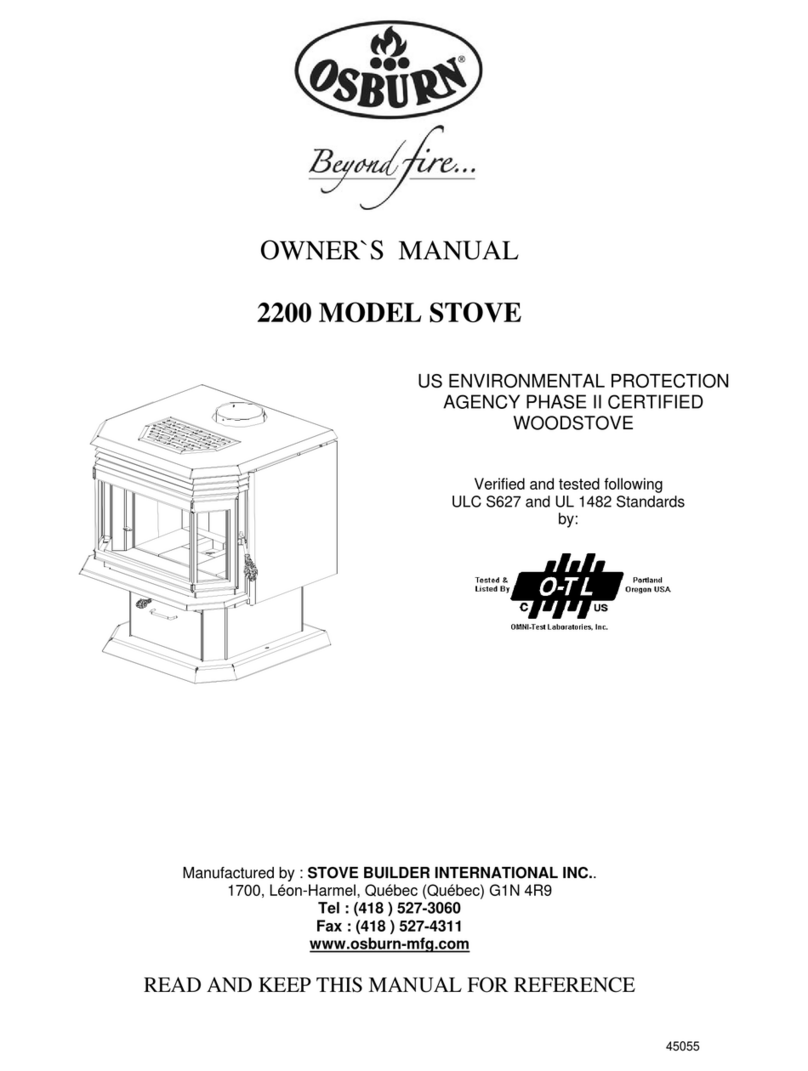
7
1. CONDITION OF THE FIREPLACE AND CHIMNEY: Examine the masonry
fireplace and chimney prior to installation, to determine that they are free from
cracks, loose mortar, creosote deposits, blockage, or other signs of deterioration. If
evidence of deterioration is noted, the fireplace or chimney should be upgraded
prior to installation.
2. ZERO CLEARANCE OR METAL HEATFORM FIREPLACE: These fireplaces and
chimneys must meet the conditions above, and the factory built zero clearance
fireplace must be listed. They must be suitable for use with solid fuel and nothing in
their owner’s manual must specifically prohibit the installation of a fireplace inbuilt.
When in doubt, check with the fireplace manufacturer. The chimney must be of at
least 1" (25 mm) larger in diameter to accommodate a required continuous stainless
steel liner running from the flue collar to the top of the chimney termination.
Never remove any part that serve to insulate the firebox from combustible materials.
Only readily detachable parts that are easily replaced, such as damper parts,
screens, and doors are to be removed from the fireplace. These parts must be
stored nearby and available for retrofit if the inbuilt is ever removed. Removal of
any parts which render the fireplace unfit for use with solid fuel requires the
fireplace to be permanently labelled by the installer as being no longer suitable for
solid fuel until the removed parts are replaced and the fireplace is restored to its
original certified condition.
3. HEARTH EXTENSION: Verify that there is a non-combustible hearth extending at
least 455mm in front of the fireplace and at least 200mm to the side of the fireplace.
Fireplaces without this hearth extension will not meet the minimum requirements
and will require additional protection.
4. CHIMNEY CAPS: Mesh type chimney caps must have provision for regular
cleaning, or the mesh should be removed to eliminate the potential of plugging.
5. LINER: The chimney must have an acceptable masonry liner suitable for solid fuel,
otherwise a continuous stainless steel liner must be installed.
6. ADJACENT COMBUSTIBLES: The fireplace should be inspected to make sure
that there is adequate clearance to combustibles, both exposed combustibles to the
top, side, and front as well as concealed combustibles, in the chimney and mantle
area. Your local inspector should have information on whether older fireplaces are
of adequate construction.




















